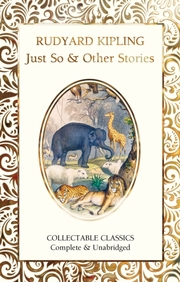
Reading and Language Arts Worksheets Don¿t Grow Dendrites
eBook
Bibliographische Informationen
Format: EPUB
Digitale Rechteverwaltung: Adobe DRM
Beschreibung
Brain-based strategies turn reluctant readers into motivated learners!
Building on Marcia Tates successful dendrite-growing teaching strategies, Reading and Language Arts Worksheets Dont Grow Dendrites contains 300 instructional activities and brain-compatible literacy. Newly consistent with Common Core State Standards, this resource offers hands-on techniques to help teach reading in relevant, motivating, and engaging ways. Activities cover literacy instruction including:
Phonemic awarenessPhonics and vocabulary instructionText comprehensionReading authentically, widely, and strategicallyWriting strategicallyCreating, critiquing, and discussing textsConducting researchUsing technological resourcesRespecting diversity in languageParticipating in literary communitiesUsing language to accomplish purposesInhalt
E-Book Informationen
Alle hier erworbenen E-Books können Sie in Ihrem Kundenkonto in die kostenlose PocketBook Cloud laden. Dadurch haben Sie den Vorteil, dass Sie von Ihrem PocketBook E-Reader, Ihrem Smartphone, Tablet und PC jederzeit auf Ihre gekauften und bereits vorhandenen E-Books Zugriff haben.
Um die PocketBook Cloud zu aktivieren, loggen Sie sich bitte in Ihrem Kundenkonto ein und gehen dort in den Bereich „E-Books“. Setzen Sie hier einen Haken bei „Neue E-Book-Käufe automatisch zu meiner Cloud hinzufügen.“. Dadurch wird ein PocketBook Cloud Konto für Sie angelegt. Die Zugangsdaten sind dabei dieselben wie in diesem Webshop.
Weitere Informationen zur PocketBook Cloud finden Sie unter www.meinpocketbook.de.
Allgemeine E-Book-Informationen
E-Books in diesem Webshop können in den Dateiformaten EPUB und PDF vorliegen und können ggf. mit einem Kopierschutz versehen sein. Sie finden die entsprechenden Informationen in der Detailansicht des jeweiligen Titels.
E-Books ohne Kopierschutz oder mit einem digitalen Wasserzeichen können Sie problemlos auf Ihr Gerät übertragen. Sie müssen lediglich die Kompatibilität mit Ihrem Gerät prüfen.
Um E-Books, die mit Adobe DRM geschützt sind, auf Ihr Lesegerät zu übertragen, benötigen Sie zusätzlich eine Adobe ID und die kostenlose Software Adobe® Digital Editions, wo Sie Ihre Adobe ID hinterlegen müssen. Beim Herunterladen eines mit Adobe DRM geschützten E-Books erhalten Sie zunächst eine .acsm-Datei, die Sie in Adobe® Digital Editions öffnen müssen. Durch diesen Prozess wird das E-Book mit Ihrer Adobe-ID verknüpft und in Adobe® Digital Editions geöffnet.
Weitere Artikel aus der Kategorie ""
Noch nicht lieferbar

Nicht lieferbar

Lieferbar innerhalb 1 - 2 Wochen



